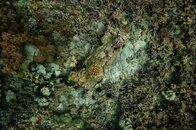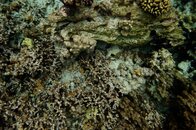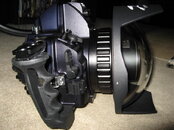Ol Dirty Diver
Registered
I just maxed out my credit card on the following dream rig:
So is my theory correct so far? Is it really in our interest to try to position the lens' outermost element (which I'm assuming to be the "primary principal plane" or close enough to it for my purpose) at the center of curvature of the dome port? If this is necessary for good corner resolution, then I can understand why my rig is failing in this regard: my lens protrudes too far into the dome port. I knew I'd need an extension ring, so I got the one recommended by Sea & Sea for the Nikon 17-35mm (extension ring "40"), which was also suggested by the vendor to be all I'd need (*note that the new 16-35mm is 0.7" longer than the 17-35mm). But if you look at the attached photo you'll see that I'm hardly using much of the real estate of that beautiful dome, due to the lens still coming so close to the inner face. I'd estimate that there is about an inch between the outer edge of the lens and inner face of the dome, and that the outermost element of the lens is receded ~3/4" inside the outer edge of the lens, so that there is probably 1.5 - 2" of space between the outer element of the lens and the inner face of the dome.
An obvious solution is simply to go ahead and buy another extension ring, or test someone else's out. The latter is not an option because I don't know other photographers with this sort of gear, and the former is not something I want to do carelessly since I am already so strapped having bought all this already. I want to be sure it would be the solution, and I figured if I could understand the theory I could perhaps precisely measure how much more extension I'd need. There are two options for the extension after all, the thinner "SX" extension ring, and putting on another thicker "40". It really looks to me like I could afford to double the extension, which would be unfortunate because the current amount of extension is already adding so much bulk. I know that another option still is to simply forget about using a rectilinear lens and opt for a fisheye, but it so happens that I have important assignment which requires images shot at 24mm and minimizing distortion.
If anyone actually read through this entire post and can advise me, I'd be much obliged. There's no doubt that this new Nikon lens will become very popular with underwater photographers, so I feel that my observations and whatever conclusions we arrive at regarding housing/dome port/extension ring combinations with this lens will be of great value to other photographers who acquire this lens in the future. Thanks in advance for your assistance.
- Nikon D700
- Nikon 16-35mm f/4 (better than the 14-24mm?)
- Sea & Sea MDX-D700 housing
- Zen 8" optical dome port
- Sea & Sea extension ring 40
- From this article I learned that it "must be such that the camera lens' primary principal plane ends up at the dome's centre of curvature. Positioning the lens in that manner ensures that its underwater field of view will be identical to its in-air field of view." Where exactly on the lens is its "primary principal plane"? I'm guessing this may be aligned with the outermost element of the lens (which I know moves in a zoom), but I can't be sure from the other resources I checked.
- If I should manage to align the lens' principal plane with the dome's center of curvature, does this actually yield the best possible image quality underwater for a particular lens/dome port? Is the issue of corner fuzziness eliminated assuming the lens' minimum focusing distance can handle the distance to the virtual image?
- It appears that dome ports are not actually complete half domes (as indicated in the dome port theory articles, such as this diagram), but instead only sections of a half dome. Indeed, the Zen website admits this about my dome port: "[it is] an 8" segment of a much larger BK7 crystal glass dome". Therefore, if I was trying to achieve positioning the lens' principle plane at the dome's center of curvature, should the front element of the lens be recessed in the housing and certainly not protruding into the dome port itself? What is the penalty of allowing the lens to protrude into the dome port? I'm guessing the problem of corner blurriness is exacerbated the further the lens protrudes inside the dome port (i.e., the closer the lens is to hitting the dome port itself)?
So is my theory correct so far? Is it really in our interest to try to position the lens' outermost element (which I'm assuming to be the "primary principal plane" or close enough to it for my purpose) at the center of curvature of the dome port? If this is necessary for good corner resolution, then I can understand why my rig is failing in this regard: my lens protrudes too far into the dome port. I knew I'd need an extension ring, so I got the one recommended by Sea & Sea for the Nikon 17-35mm (extension ring "40"), which was also suggested by the vendor to be all I'd need (*note that the new 16-35mm is 0.7" longer than the 17-35mm). But if you look at the attached photo you'll see that I'm hardly using much of the real estate of that beautiful dome, due to the lens still coming so close to the inner face. I'd estimate that there is about an inch between the outer edge of the lens and inner face of the dome, and that the outermost element of the lens is receded ~3/4" inside the outer edge of the lens, so that there is probably 1.5 - 2" of space between the outer element of the lens and the inner face of the dome.
An obvious solution is simply to go ahead and buy another extension ring, or test someone else's out. The latter is not an option because I don't know other photographers with this sort of gear, and the former is not something I want to do carelessly since I am already so strapped having bought all this already. I want to be sure it would be the solution, and I figured if I could understand the theory I could perhaps precisely measure how much more extension I'd need. There are two options for the extension after all, the thinner "SX" extension ring, and putting on another thicker "40". It really looks to me like I could afford to double the extension, which would be unfortunate because the current amount of extension is already adding so much bulk. I know that another option still is to simply forget about using a rectilinear lens and opt for a fisheye, but it so happens that I have important assignment which requires images shot at 24mm and minimizing distortion.
If anyone actually read through this entire post and can advise me, I'd be much obliged. There's no doubt that this new Nikon lens will become very popular with underwater photographers, so I feel that my observations and whatever conclusions we arrive at regarding housing/dome port/extension ring combinations with this lens will be of great value to other photographers who acquire this lens in the future. Thanks in advance for your assistance.






